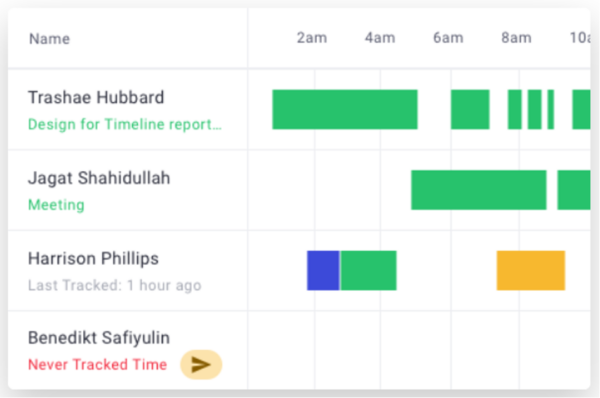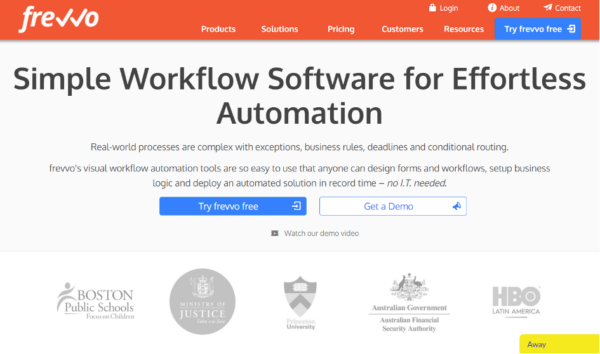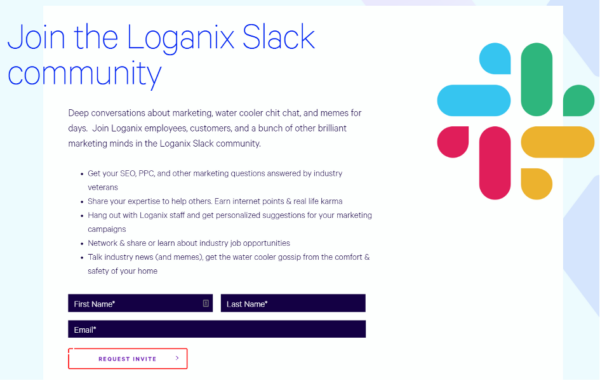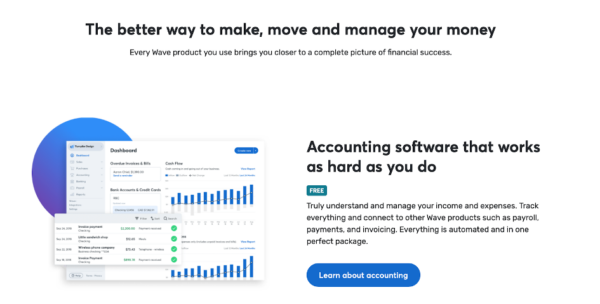Remote work was on the rise for years well before COVID-19 pushed even more of us to home offices. In the past five years, remote work has grown by 44%, and that trend is only accelerating.
Working remotely has brought up a lot of questions about what the future of employment will be. Companies now have to figure out new ways to structure employee benefits, maintain a sense of company culture, and most importantly – maintain employee productivity.
This is good news for employees who crave flexible working arrangements, but also unearths the perennial question of remote work: are you actually more productive at work than you are in the office?
77% of remote workers say their productivity is the same or higher as it was in the office, but some employers have their doubts that this is true.
No matter what your opinion (or your boss’s) of your remote work productivity levels, most of us can benefit from optimizing our work routine to improve our productivity even further.
Not only does being more productive help you feel more satisfied at work, but it keeps your superiors happy too.
These remote work productivity hacks will help you level up your routine, whether you need a complete revamp of your productivity or just a few tweaks to keep you sane.
Don’t be afraid to try a few different things to find the productivity hacks that work best for you!
Prioritize Your Work Correctly
Even if you do nothing else on this list, prioritizing your work effectively will have a huge impact on your productivity.
To maximize your productivity, you need to align your tasks with the hours of the day when you do your best work. But that’s sometimes easier said than done.
If your work doesn’t allow for that approach – maybe you have ever-shifting priorities, or your most productive hours are often interrupted by meetings – you might need to find another way to prioritize your tasks for maximum efficiency and productivity.
Try these approaches to find the best way to prioritize your work.
1. Pick One Important Task To Do Each Day
No matter what your workload looks like, one of the easiest ways to stay productive is to pick one major task to complete each day.
This doesn’t mean you have to complete a major project every single day. Instead, frame it to yourself this way: what is the one thing you need to do to consider this day a success?
Some days, that one thing might be drafting a proposal, closing a client deal, or another high stakes task. Other days, it can be something smaller, like clearing out your inbox.
One benefit of this approach is that it doesn’t matter if you end up with surprise meetings or an otherwise interrupted workday. You can feel accomplished by just doing one thing, rather than worrying that your ten-item to-do list is a wash.
Choosing one task per day to get done no matter what also helps with setting goals for future days and weeks.
2. Start With Your Hardest or Most Annoying Task
Time for some classic productivity hacks: do the hardest thing first!
This might not work for everyone, but in most cases, it’s a great way to free your mind from the dread of your most difficult or least enjoyable tasks.
The theory behind this hack is to do the most difficult things when you’re most alert. For most people, this is in the morning, so it’s a good place to start. Once you’re done with the hard stuff, you can do easier things later in the day when your energy is lower.
This can work in other ways too. For example, if you hate doing expense reports, get them out of the way first thing so you don’t waste energy dreading it throughout the day.
If you’re not a morning person, it’s easy to reverse this tactic to best fit with how your brain works. Start with easy projects while you nurse your second (and third) cup of coffee, and dig into the more challenging work after lunch.
3. Use a Task Management System That’s Flexible for You
It’s hard to prioritize your work if you don’t have a good grasp of what work you have to do. That’s why having a task management system that works for you is critical to remote work productivity.
Even if your team has their own way of tracking work, it can be worth it to establish your own method to help you stay organized and on task.
Here are a few methods you can try:
- Use project management software to track tasks, deadlines, and time worked
- Get a whiteboard to have a non-digital way of tracking your to-do list
- Keep a detailed planner or calendar to look at your plans for the day, week, or month
- Handwrite tasks on sticky notes and rearrange them in order of priority
- Track tasks in a Google spreadsheet
Your productivity will be highest when you have a system that fits all the quirks about how you specifically work. And since you’re at home, you have the flexibility to cover your desk in post-its or install a series of whiteboards, without having to worry about impacting your coworkers.
Get the Right Tools
Tools are productivity’s best friend. The right tools help you be more efficient and more accurate in your day-to-day tasks, so you can stay focused on the things that can’t be replaced by technology.
These productivity hacks will help you find the right tools to make your workflow more efficient.
4. Automate Everything You Can
Automation is on the rise, and workers everywhere can harness its power to be more productive.
The biggest drains on time and productivity are often repetitive, low-priority tasks that don’t require a human touch to do correctly. Things like filtering emails, updating databases, and approving time-off requests or travel expenses are all tasks that can be automated to save you time.
Some industries, such as marketing, can automate higher-level tasks too, to a degree. And even when full automation isn’t possible, creating a process to streamline routine tasks can increase productivity dramatically.
For example, a tool like Frevvo can help you outline workflows and build forms that automate all kinds of tasks.
(Image Source: frevvo.com)
Automation isn’t just a one-time setup. As new tools are created and existing tools are updated, it’s possible to automate more and more tasks, and more complex ones too.
Regularly check for new ways to automate your work, and put that extra time to better use.
5. Make Sure Your Tools Have Good Support
There’s nothing worse than finding that dream tool that makes your life so much easier, only to find it not working as it should.
And when that tool doesn’t have good support that can help you resolve problems quickly, you’re wasting even more time: first, because the tool doesn’t work, and then because you have to spend extra time troubleshooting due to poor customer service.
When vetting new tools to improve your productivity, be sure to look for companies that explicitly talk about the customer support they offer, like this homepage:
(Image Source: lfacapsulefillers.com)
Remember that good support isn’t just for project management or time tracking. It’s critical for any tool your company uses, no matter how niche.
6. Invest In Good Internet
Spotty internet can kill your productivity quicker than almost anything else.
Take the time to research the best internet service in your area, and don’t be afraid to spend a little more. Your productivity will thank you!
As with tip #5, make sure you choose an internet service provider with good customer support. There’s no guarantee you won’t have an outage or other connectivity problems. Should that arise, you want the best people available to help you fix your problem quickly so you can stay on task.
Join a Virtual Community
A virtual community is nearly as vital as automation for helping you be productive.
It helps you take short breaks throughout the day, giving your mind a brief respite that helps you maintain your focus.
Community also helps you feel more fulfilled at work – and when you’re happier, you’re probably more productive too.
7. Leverage Slack
Chances are you’re accustomed to using Slack to take the place of popping by a coworker’s desk to ask them a quick question. But Slack can be a real place of community too.
Take Loganix, for example. This fully-remote digital marketing and link building company communicates almost entirely over Slack for work needs, but they’ve opened their community to the entire marketing industry too.
In Loganix’s “Water Cooler” Slack channel, employees, clients, and marketing professionals can stay connected while gaining industry knowledge. Some companies create just-for-fun channels on different themes, like movies, gaming, or even just memes.
8. Find Professional Social Media Groups
Mindlessly scrolling your favorite social media might feel like a nice break, but it’s too often a time waste as you get sucked into the vortex of viral tweets, political rants, and dog memes.
If you can’t bear to skip social media for the whole workday, consider channeling that urge into something more productive. There are tons of groups for professionals on Facebook and LinkedIn you can join to meet these goals.
A good example is GoAura’s Facebook group for customers and other wholesale professionals.
(Image Source: goaura.com)
In groups like this, you’ll get resources and information about the topic, and be able to converse with like-minded professionals. It’s a great place to get new perspectives on your field and collaborate to solve problems.
You can also find professionals on social media by using tools like this Linkedin email finder. This is a great tool to connect with prospective partners or even reach out for new work opportunities.
Stay Focused
Productivity ultimately comes down to your ability to stay focused for long periods throughout the day. But it’s not enough to just know that you need to be focused – you need to know-how.
These tips will help you find ways to maintain your focus throughout the day, so your productivity improves.
9. Set Goals Daily, Weekly, and Monthly
Goals are one of the best ways to help you focus. It gives you a clear end to work toward for any amount of time.
Get into the habit of setting goals regularly – ideally daily, weekly, monthly, and even annually. To start, think of your daily goal as your one task for the day from tip #2.
If you’re not in a managerial or supervisory role, your goals will likely be very tied to your day-to-day tasks. You can make goals for early deadlines, improving processes, or taking on new kinds of projects.
If you’re a manager or run your own business, your long-term goals will likely look a little different. You might want to improve employee efficiency, increase your total number of clients, or grow your business organically by a certain percent.
10. Eliminate Unnecessary Tasks
Too often, productivity goes down the drain because you’re spending time on tasks that aren’t necessary, aren’t your job, or could be automated.
When optimizing your work habits for maximum productivity, take a good hard look at everything you do in a given week. Make a list of anything that you feel you could eliminate, either because they’re not important or there’s a better person (or tool) to do them.
This is even more true if you are self-employed. Tasks like accounting can take up time that could be far better used elsewhere, so a free tool like WaveApps that can automate parts of those tasks makes you far more productive.
(Image Source: waveapps.com)
You’ll get back the time you used to spend on these tedious tasks, and you’ll also get back the time you spent dreading them.
If you’re not a decision-maker for new tools or work assignments, it’s always worth it to bring to your manager or team leader. Look for ways you can improve the efficiency and productivity of the whole team, and you’ll make a strong business case for finding better ways to accomplish these tasks.
11. Use Time Blocking
Another barrier to being more productive is unintentionally trying to do too many things at once. You’re working on a report, but then an email comes in that you need to respond to, and now your productivity is officially derailed.
A great way to prevent this is through time blocking. In this method, you allocate larger chunks of your day to specific tasks and then work only on that task during the designated time.
For example, you might block off an hour to respond to emails early in the day. Then you’ll close your email application and work on drafting a report or setting up a marketing campaign or whatever else you need to do.
Of course, you’ll need to check your email or instant messages throughout the day to stay in touch with your colleagues. But designating specific times where you can engage with those tasks helps you set aside time to work on things that require higher concentration for longer periods of time.
Create a Routine
The golden rule of productivity is to have a routine that gets you into and out of work mode, even when you don’t leave your house.
But that routine doesn’t have to simply mimic what you’d do if you still had to commute to the office. You can adapt it to what best fits your work style, company expectations, and the routines of others in your house.
Still, there are a few key facets of developing a routine that you should consider as you figure out what works best for you. Here are some to consider.
12. Have a Consistent Schedule
Starting and ending your work at roughly the same time every day is huge for being more productive when you work remotely. Your mind and body will start to expect work mode in these hours, making it easier to settle into your tasks for the day.
Your manager might need you to stick to a specific schedule for the needs of the office, but if they don’t, there’s no need to force yourself into a 9-to-5 habit if it doesn’t work for you.
Morning people can start at seven or eight in the morning, while night owls can linger over their coffee and start at 10 or 11 a.m.
You might also consider working a few hours early in the day, taking a long midday break, and finishing up later. It all depends on when you feel most focused and how long you can work at that level.
No matter when you start working, be sure to get ready for work before you actually start working.
Getting dressed is often the best way to officially “get ready,” but if you’re committed to working in pajama pants, there are other ways to prepare to start your day. Make your tea or coffee and a little breakfast, take the dog for a walk, or do a few household chores as part of your morning routine before sitting down to work.
13. Schedule Breaks to Move Around
A lot of remote workers attribute their increased productivity to their ability to work for a long stretch of time to finish tasks. With no commutes or meetings or spontaneous lunch outings with coworkers, it’s easier to keep your head down and power through.
But some level of breaks and distractions are actually good for your productivity. They let your mind work on a problem in the background and give you a fresh perspective when you work on a task.
Since there are likely fewer distractions in your home office than in a building full of coworkers, it’s important to schedule your breaks to give your brain a break. (And you should move around a little too.)
Here are a few ways to incorporate regular breaks into your remote work schedule:
- Go for a walk around the block
- Do a yoga routine or online fitness class
- Eat lunch outside, in your backyard, or at a nearby park
- Water your plants or do other small household tasks
- Make a small meal that requires a little more effort than reheating leftovers
If it’s difficult to take breaks consistently, set reminders on your phone or block off time on your calendar for them.
14. Clearly Signal the Workday Is Done
When home and work are in the same place, it can be difficult to turn off when the workday (or work week) is done. It’s critical to have a set routine for moving out of work mode and into relaxation mode.
The best way to do this is to simply close the door to your office when you’re done for the day, and not go back in until the next time you work. But if you don’t have an exclusive office space, you’ll need to take a different approach.
One way to transition out of work mode is to review everything you did during the day and use that to set goals and update your to-do list for the next day.
You can also set aside an hour at the end of the day for catching up on emails, entering data, or other low difficulty tasks.
If you’re able, close your work laptop and put it where you won’t have to see or think about it until the next time you work. If your work and personal laptops are the same device, close out all your work programs and set any notifications to “do not disturb” when it’s not working hours.
Conclusion
Remote work is here to stay, so start maximizing your productivity now.
Think critically about your strengths and weaknesses. When do you work best? What tasks derail your focus? Look at those areas to optimize your work routine to get the best results.
By considering what works best for you – rather than just blindly following every remote work tip there is – you can build a system that maximizes what you’re good at while mitigating the impact of those tasks that seem to make you less productive.
Boosting your productivity is a never-ending quest, but these hacks will take you a long way.





